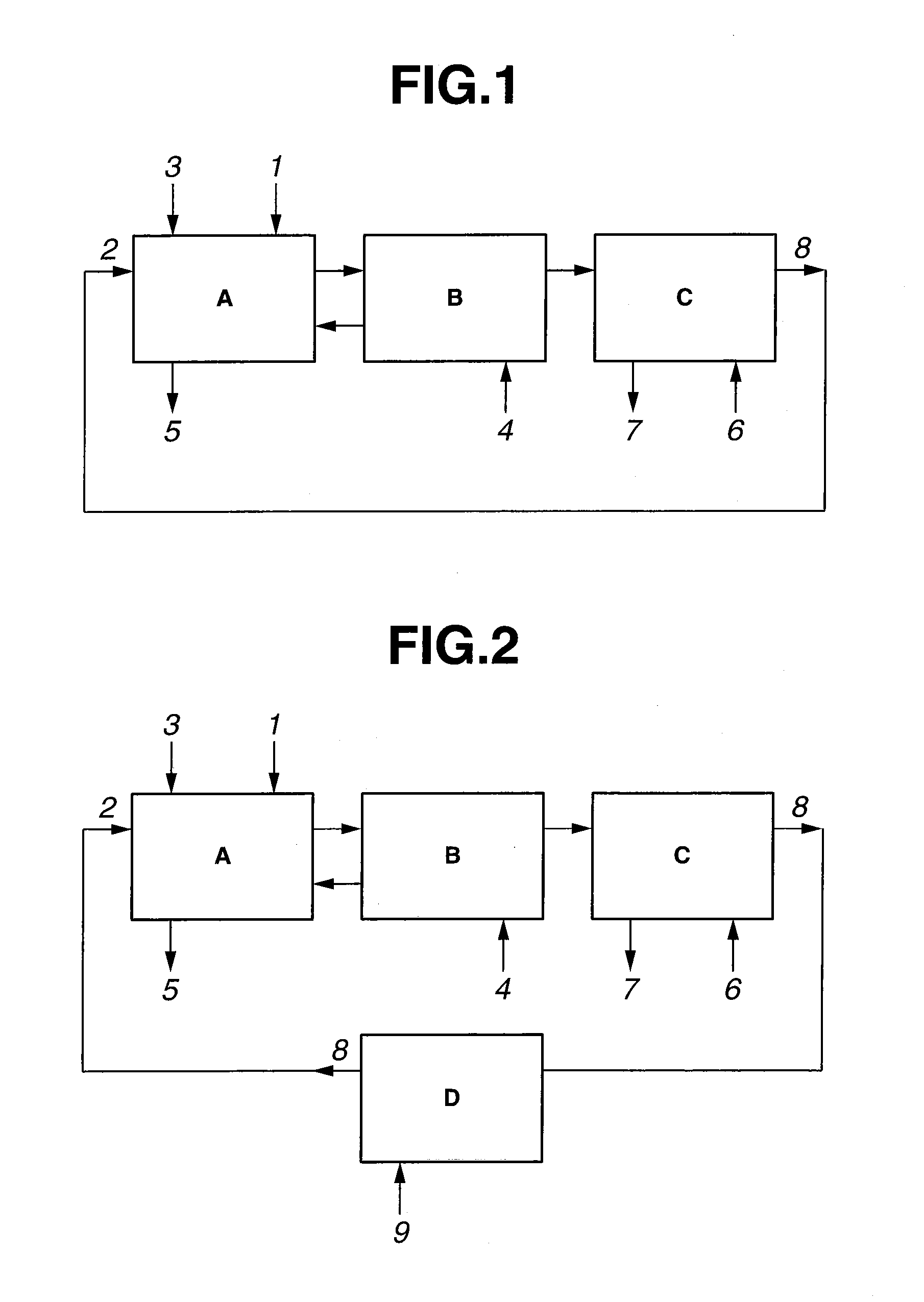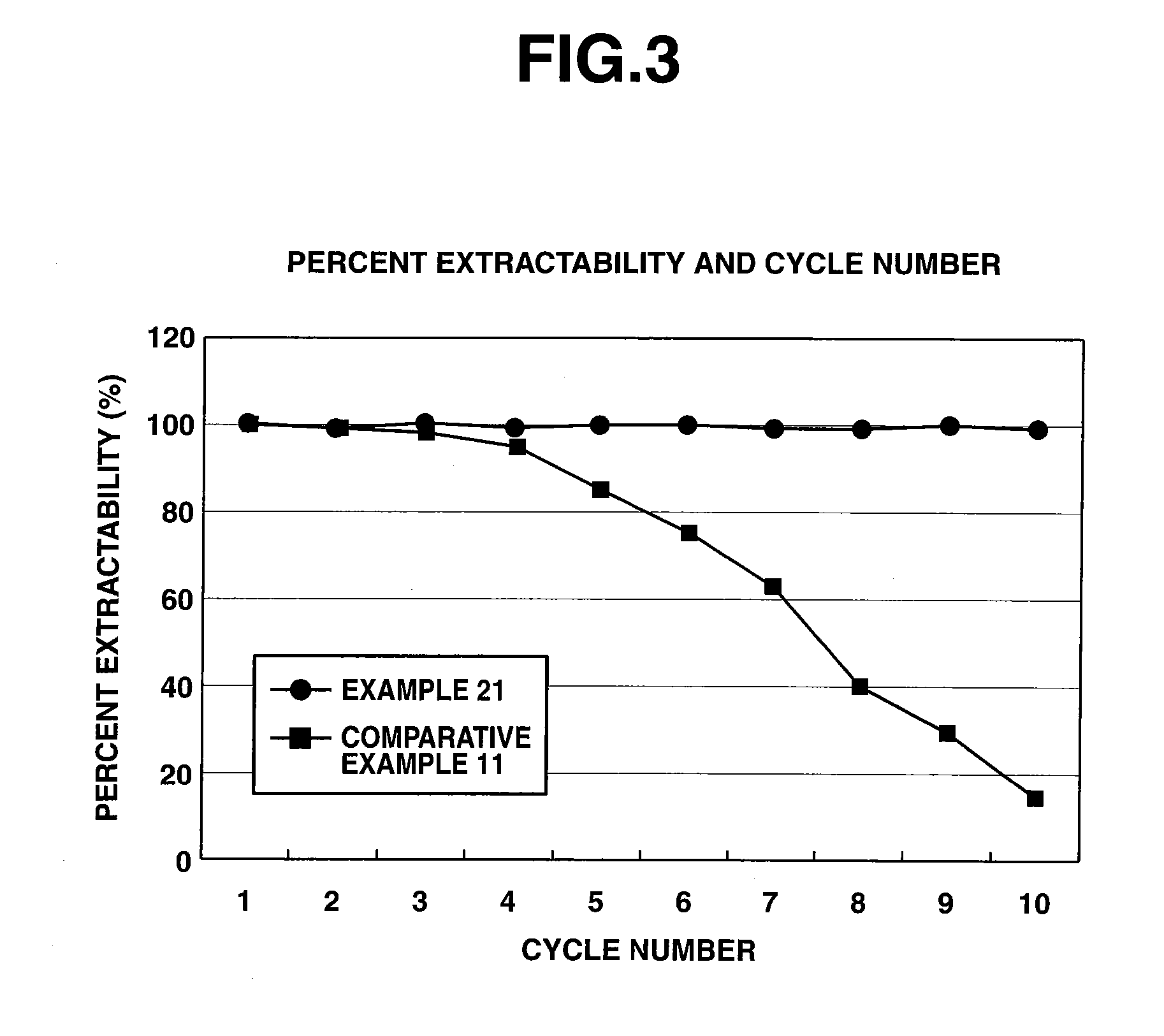Method for extracting and separating rare earth elements
- Summary
- Abstract
- Description
- Claims
- Application Information
AI Technical Summary
Benefits of technology
Problems solved by technology
Method used
Image
Examples
example
[0060]Examples of the invention are given below by way of illustration and not by way of limitation. The concentration of rare earth elements in an aqueous solution was measured by an ICP atomic emission spectrometer (ICP-7500, Shimadzu Corp.).
example 9
Mutual Separation of Rare Earth Elements
[0074]Solvent extraction was performed on a mixture of rare earth elements according to the invention for examining the ability to separate rare earth elements.
[0075]DODGAA was dissolved in 1-hexanol to form a solution having a concentration of 0.3 mol / L as the organic phase. Praseodymium chloride and neodymium chloride were dissolved in an aqueous acid solution to form a mixed solution having a rare earth element ratio Pr:Nd of 1:1 on a molar basis and a Pr+Nd concentration of 0.1 mol / L. A separatory funnel was charged with 100 ml of the organic phase and 100 ml of the aqueous phase, shaken at room temperature (20° C.) for about 20 minutes to effect extraction, and allowed to stand until equilibrium was reached. The organic phase was then separated from the aqueous phase. Next, 100 ml of the organic phase was fed to a separatory funnel together with 100 ml of 5N hydrochloric acid, which was shaken at room temperature (20° C.) for about 20 min...
examples 10-14
Organic / Aqueous Phase Separation
[0077]Solvent extraction was performed on a mixture of rare earth elements according to the invention for examining the temperature of organic and aqueous phases, and the time taken until organic / aqueous phase separation (phase separation time).
[0078]DODGAA was dissolved in 1-hexanol to form a solution having a concentration of 0.3 mol / L as the organic phase. Praseodymium chloride and neodymium chloride were dissolved in an aqueous acid solution to form a mixed solution having a rare earth element ratio Pr:Nd of 1:1 on a molar basis and a Pr+Nd concentration of 0.1 mol / L. A separatory funnel was charged with 100 ml of the organic phase and 100 ml of the aqueous phase, shaken at a selected temperature for about 20 minutes to effect extraction, and allowed to stand until equilibrium was reached. The organic phase was then separated from the aqueous phase. The temperature of combined organic and aqueous phases and the time taken until organic phase / aqueo...
PUM
| Property | Measurement | Unit |
|---|---|---|
| Acidity | aaaaa | aaaaa |
| Acidity | aaaaa | aaaaa |
| Dissociation constant | aaaaa | aaaaa |
Abstract
Description
Claims
Application Information
 Login to View More
Login to View More - R&D
- Intellectual Property
- Life Sciences
- Materials
- Tech Scout
- Unparalleled Data Quality
- Higher Quality Content
- 60% Fewer Hallucinations
Browse by: Latest US Patents, China's latest patents, Technical Efficacy Thesaurus, Application Domain, Technology Topic, Popular Technical Reports.
© 2025 PatSnap. All rights reserved.Legal|Privacy policy|Modern Slavery Act Transparency Statement|Sitemap|About US| Contact US: help@patsnap.com



